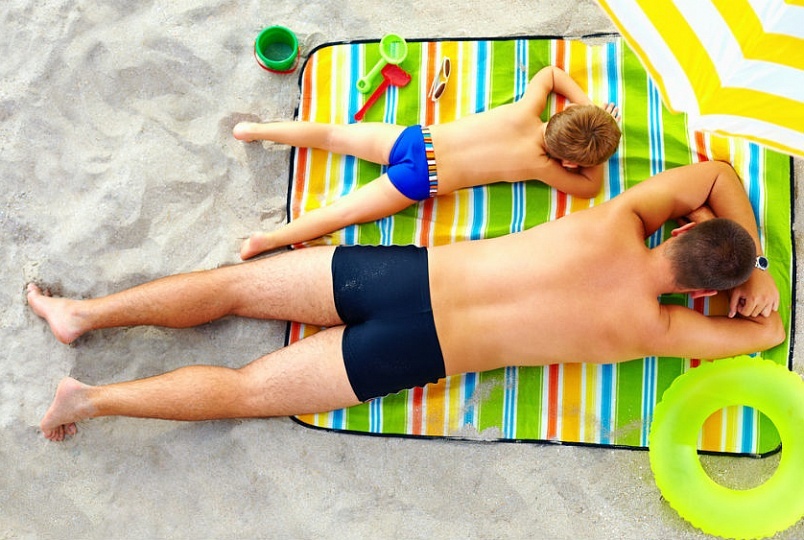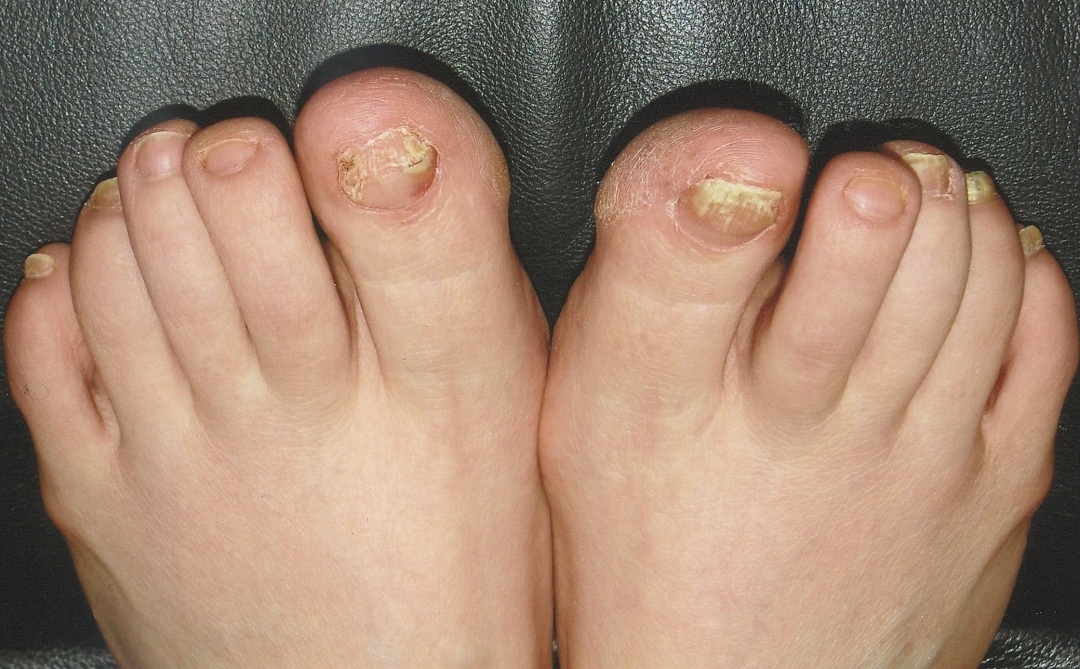How to treat toenail fungus: remedies for treating fungus at home
Content
- Description of the disease
- How to recognize nail fungus (symptoms)?
- Causes of nail fungus
- How and which doctor treats toenail fungus?
- Diagnostics
- How to treat toenail fungus, if you still decide to do it yourself?
- Antimycotic varnishes, ointments and creams for mild cases of fungus
- Antifungal agents for nails in advanced cases of fungus
- Means for painless removal of a nail affected by a fungus (Nogtivit, Nogtimycin)
- Treatment of fungus on the feet with folk remedies (for the most desperate)
- Tea tree and lavender oils
- Listerine mix with lemon juice or apple cider vinegar
- Prevention of fungal nail infections
- Forecast
Description of the disease
Fungus of nails (onychomycosis) on the feet, the disease is not pleasant, but with proper treatment, it goes away. The sooner the treatment begins, the more chances you will get rid of it completely.
Typical signs of toenail fungus are thick, discolored and ugly nail plates.
As a therapy, many special agents are available - antimycotic pills, antifungal varnishes and nail ointments that quickly help cure fungus.
Nail fungus is the most common disease of the nails on the hands and feet, and may occur in both adults and children.
Affects nail fungus of those who wear tight shoes, suffer from circulatory problems, or diabetes mellituswho go barefoot in swimming pools or saunas, where the risks of contracting mycosis are especially high: in a warm, humid environment, fungus feel comfortable.
Also, the spread of pathogenic fungal microflora occurs by contact from a sick person to a healthy person against the background of ignoring hygiene rules. The largest percentage of cases of onychomycosis infection occurs in the family, through common household items and shoes.
What is nail fungus?
Nail fungus is a fungal infection of the nails. Doctors also call it mycosis of nails or onychomycosis (from lat. onycho - nail, mycosis - fungal infection). The infection slowly destroys the nail plate.
If the affected nail is left untreated, there is a risk that the fungus will completely destroy it, and also spread to adjacent nails and skin.
In most cases, fungal infections are responsible for onychomycosis: the so-called dermatophyte fungi. Also, in rare cases, onychomycosis occurs due to yeast fungi, mold, and a combination of several fungi.
How to recognize nail fungus (symptoms)?

Symptoms typical for onychomycosis:
- nails exfoliate;
- discolor and turn yellow (see. Photo);
- cut of the nail plate crumbles.
The first symptoms of fungal infection appear on the free edge of the nail. During the development of the infectious process, fungi colonize the nail plate, corrode it, as a result, the nail begins to flake off.
There are several forms of nail fungus with different symptoms:
- Distolateral subungual onychomycosis: The most common form of nail fungus. Pathogens enter through the junction between the nail and the fingertip (hyponychium). The nail becomes brittle, the fungus gradually spreads to the entire nail plate, acquiring a yellowish color.
- White superficial onychomycosis: the fungus (usually interdigital trichophyton) spreads only to the upper layers of the nail plate, which leads to discoloration of the nail.
- Proximal tendon onychomycosis: The fungus invades the posterior nail fold and attacks the nail root (nail matrix), the site of actual nail growth. This form of nail fungus is rare.



In addition, there are other forms of toenail fungus like yeast and mold onychomycosis. If the nail is completely affected, including the root, it is called onychodystrophy. With onychodystrophy, the nail is completely destroyed.
Causes of nail fungus

Fungus of nails (onychomycosis) occurs as a result of infection with a fungal infection (dermatophyte fungi). In most cases, the cause of the disease is the dermatophyte Trichophyton rubrum (Trichophyton red).
Other possible, but less common pathogens are Trichophyton Mentagrophytes and Epidermophyton floccosum.
Also, in rare cases, yeast and mold fungi are the causes of nail fungus. In addition, there are mixed forms of onychomycosis, in which many different fungi are involved.
Some people are more likely to contract nail fungus than others. Factors contributing to onychomycosis:
- injuries to the nails, for example, during sports or pedicure;
- too tight shoes;
- deformities of the feet;
- circulatory disorders of the legs or arms;
- disorders of nail growth;
- metabolic disorders such as diabetes, obesity;
- weak immune system of the body;
- predisposition to onychomycosis.
Read also:Internal and external causes of the development of furunculosis, effective treatment

In a humid, warm environment, the fungus spreads especially well. Anyone who sweats a lot and wears tight shoes can easily catch toenail fungus. Typical places where you can pick up the disease are, for example:
- pool;
- sauna, bath;
- fitness studio;
- dressing room, shower room in gyms.
Fungal infections are tenacious, they are striking in their resistance to adverse environmental factors. Even in a 1% formalin solution (a source of formaldehyde, disinfectant and deodorant agent), fungi die only after 20 minutes.
How and which doctor treats toenail fungus?
Nowadays, medicine has a wide range of antifungal drugs that have both local and systemic effects that can quickly and effectively rid a person of onychomycosis. Treatment of nail fungus should be carried out by a specialist - dermatologist or mycologistwith sufficient qualifications in this area.

Since it is necessary to choose the right drugs, focusing on individual patient characteristics and a specific clinical case, the doctor will select the most effective means for treatment.
Treatment tactics are chosen by a dermatologist based on a number of factors, such as:
- the area of the pathologically altered area;
- the duration of the disease;
- the nature of the change in the internal structure of the affected nail;
- the presence or absence of concomitant diseases.
Medicines that are used by modern medicine to combat nail mycoses are capable of not only destroying a pathogenic microorganism, stopping the development of pathology, but also accumulate in the tissues of the nail plates for a sufficiently long time period, thereby reducing the duration of therapy stroke of nails.
High-quality treatment assumes an integrated approach, in which both local and systemic antimycotics are used. However, it is worth remembering that every drug designed to fight a fungal infection has contraindications and side effects on the human body.
Therefore, only a qualified specialist should prescribe remedies for the treatment of toenail fungus.
Diagnostics
An experienced dermatologist will detect nail fungus at a glance. To determine the causative agent, the doctor will conduct laboratory tests. To do this, he will cut off the part nail and small a piece of skin for examination under a microscope. Thus, the doctor will make an accurate diagnosis and prescribe the appropriate therapy.
Also, diagnosis is also necessary after therapy in order to be 100% sure that the treatment of the fungus was successful.
It is carried out twice, the first time after 2 weeks, and the second one another month later. In the event that negative results were obtained both times, the patient is healthy.
In addition, the examination should be carried out during the passage of medical procedures for the timely termination of therapy. After all, it also happens that the fungus will respond to treatment faster, so why expose the patient's body to an unnecessary additional load with completely harmless drugs.
Important! Some patients, against the background of prolonged antifungal therapy, sometimes develop hyperemia and peeling of the skin. These are the first symptoms of drug allergy. If they appear, you should immediately stop taking medications and contact your doctor, who, after allergy tests, will determine which particular drug caused the reaction and replace it with a more harmless analogue.
How to treat toenail fungus, if you still decide to do it yourself?
What therapy will be in each case depends on the type of fungus and how much it has spread.
Antimycotic varnishes, ointments and creams for mild cases of fungus

If the nail fungus is not started and is at the initial stage of development, it may be enough to process affected nails with the help of special antimycotic drugs, in the form of solutions, ointments, cream and varnishes.
The following drugs are effective for treating mild nail fungus:
- Mikozon (cream) - the drug is effective only at the initial stage of the fungus. It is applied 2 times a day (morning and evening), the duration of treatment is from 2 to 6 weeks. It costs 70-150 rubles, depending on the region.
- Zalain (cream) Is a modern broad-spectrum antifungal drug. Apply a thin layer on the nail 2 times a day for 2-6 months, depending on the duration of the fungus. It costs 160-520 rubles.
- Exoderil (solution, cream) - antifungal, antibacterial, anti-inflammatory agent. It is used 2 times a day, the duration of therapy is up to 6 months. The drug costs 285-530 rubles.
- Lotseril solution - it is used to treat affected nails. The drug is applied twice a week, after removing and cleaning the affected areas of the nail. It costs 788-1200 rubles in pharmacies.
- Batrafen varnish - a special antimycotic varnish, effective both in the early stages of nail fungus, and in advanced ones. The courses of treatment with this drug are divided by months. The scheme is as follows - during the first month it is used once every two days, in the second month - 2 times a week, the third and subsequent months - once a week. The therapy continues until the complete restoration of the nail plates. The varnish is on sale at a price from 1900 to 2500 rubles.
- Mycosan - a complex remedy against nail fungus, sold in a set with ten files. The price of the drug in pharmacies is 1000-1500 rubles.
Read also:Pigmented xeroderma
Each of the presented funds is available on the Russian market.
Antifungal agents for nails in advanced cases of fungus

In cases where the pathology is neglected, or progresses at a rapid pace, or there is a large area lesions, you should start using antifungal drugs in tablets that have systemic action.
Here is a list of oral antimycotic drugs (tablets) most often prescribed for people suffering from fungal infections of the nail plates:
- Ketoconazole (analogue of Nizoral), the price in pharmacies starts at 500 rubles;
- Fluconazole (analogues are Flucostat and Diflucan), the cost of drugs starts from 170 rubles;
- Orungal (analogues - Canditral and Rumikoz), price - from 500 rubles;
- Lamisil (Terbinafin, Onykhon), cost in pharmacies from 350 rubles.
As you can see, the choice of means for the treatment of mycoinfection is huge, there are both inexpensive and expensive means. However, these medications can have a number of contraindications. For example, they cannot be used to treat children, patients with hepatic or renal failure.
In addition, antifungal drugs are pharmacologically incompatible with a whole list of drugs belonging to other groups, for example, hormonal contraceptives.
Means for painless removal of a nail affected by a fungus (Nogtivit, Nogtimycin)
There are many drugs with which you can remove the nail affected by the fungus without pain. An example of such a drug is Nogtivit. The cream is an alternative to the surgical method of removing the affected nail. This cream consists of the following ingredients:
- stearic acid;
- natural essential oil of tea tree;
- urea;
- propylene glycol;
- triethanolamine.
Nogtivitis contributes not only to the removal of the diseased nail plate, but also to the regrowth of a healthy one.

Before using Nogtivit, the affected nail plates must be thoroughly steamed in the following solution: 1 tsp. l. soda and 1 tsp. l. liquid soap per liter of water. After steaming, the area to be treated should be wiped dry and the adhesive plaster should be fixed around the nail.
Apply the cream in a thick layer without rubbing, it is also not allowed to get the substance on healthy tissues. After application, cover the nail plate with a plaster.
You can remove the plaster after 4 days, then you need to steam the nail plate again and, using pedicure accessories, remove the part of the stratum corneum that has already exfoliated.
Treatment of toenail fungus using this procedure should be carried out until the nail plates are completely cleaned.
An analogue of the drug "Nogtevit" is "Nogtimycin", it has the same properties. It consists of the following ingredients (it is necessary to study the composition in order to exclude allergies to the components of the drug):
- castor oil;
- methylisothiazolinone;
- urea;
- beeswax;
- emulsion wax;
- corn oil;
- lavender, kayeput, mint oils;
- propylene glycol;
- salicylic and stearic acid.
Treatment of fungus on the feet with folk remedies (for the most desperate)
If the above antifungal drugs, ointments and varnishes did not help (which is unlikely) or you do not have money to buy (albeit inexpensive) funds, and there is no time to go to a dermatologist and mycologist or do not want to (which is in vain), you can use folk means.
Read also:How to remove freckles on the face and body, quickly at home
When treating nail fungus at home, a whole arsenal of folk remedies is available to people, as well as advances in veterinary medicine, because sometimes drugs intended for the treatment of animals can help man.
One of these inexpensive veterinary drugs is Phenol-free creolin (costs 150-200 rubles for a 500 ml bottle) - a veterinary drug that is very effective in the fight against nail fungus.
This drug has antiparasitic, disinfectant and antiseptic properties. But its use should be carried out as carefully as possible in order to prevent the drug from entering healthy tissues.
For this purpose, the skin around the nail plate is sealed with an adhesive plaster, after which it is carefully the infected nail is treated once a day for 2-3 months until the fungus is on the nail will not work.
Tea tree and lavender oils

Treating nail fungus at home with tea tree oil and lavender is quite effective, since the first is a natural antifungal antibiotic, and the second helps to defeat infection and prevent skin irritation covers.
It is worth buying exclusively natural oils, they have the necessary medicinal properties, in contrast to their artificial counterparts, which can only boast of a pleasant smell.
First, prepare the mixture. It consists of equal proportions of tea tree oil, lavender oil, and olive oil (for example, 10 drops each, depending on the number of affected nails).
The mixture is mixed only for one application, the next day you mix it again. You need to apply the product every day.
It is optimal to do it at night, putting on socks on your feet after processing.
Listerine mix with lemon juice or apple cider vinegar
Another original and effective recipe is the use of a mixture of mouthwash - "Listerine" with lemon juice or apple cider vinegar.
The recipe is as follows:
- "Listerine" is poured into the bath;
- Apple vinegar or squeezed lemon juice;
- then fat or legs with affected nails are immersed for a quarter of an hour.
The remedy is used as an adjunct to the main treatment, however, this recipe itself is quite effective.
Prevention of fungal nail infections

Infection occurs in the case of direct contact of pathogenic fungi with the skin and nails of a person susceptible to infection.
If there is no predisposition to disease, metabolic disorders, and the immune system is strong enough, then mycosis will not develop.
Also, you can reduce the risk of onychomycosis if you follow simple rules and do not neglect personal hygiene:
- do not wear tight shoes;
- walk in the sauna, steam bath, swimming pools only in flip flops;
- wear socks made from natural materials and change them every day;
- never use someone else's shoes;
- wipe your feet dry after bathing or showering;
- keep your feet dry at all times.
If you follow each of these rules, the risks of developing the disease will decrease.
Forecast
In the treatment of onychomycosis in 90% of cases, the prognosis is favorable.
It is important to carry out therapy consistently and long enough: if the fungus remains, there is a risk that it will spread again. Treatment for nail fungus lasts several months.
In the case of a full and effective treatment, after a certain time all the symptoms of the fungus will disappear, and the affected nail plate will be replaced with a clean and healthy one.
Rarely, but still, relapses of the disease are observed, from almost invisible foci of infection on the nails under the influence decrease in immunity, as well as under favorable conditions for the development of a fungal infection, the disease reappears returns. Therefore, after the end of the course of treatment of onychomycosis, you should undergo repeated examination for the presence of a pathogen and in the future adhere to the recommendations for the prevention of relapse.



